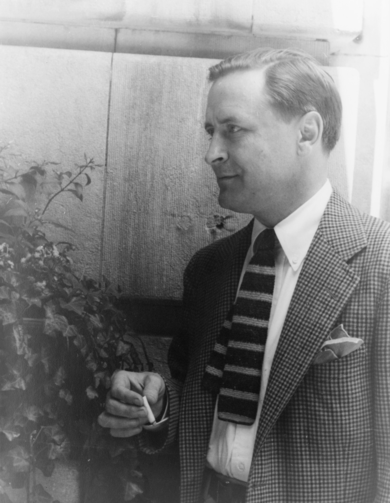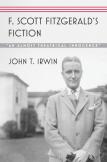Great Scott
Do we need another book about F. Scott Fitzgerald (1896-1940)? He wrote only four novels and dozens of short stories, a small body of work that has spawned a dozen biographies, countless academic books and articles as well as several films of The Great Gatsby and his other fiction. If this fine interpretation by John Irwin, a lifelong teacher of Fitzgerald in American literature courses at Johns Hopkins, were just another overview, I would say no. But he has produced a work of love derived from decades of teaching the imaginative patterns in the main narratives of this chronicler of the American Jazz Age and Depression.
Irwin uses an eclectic approach to Fitzgerald, mixing biography with close reading of imagery and plot, all the while inserting personal insights into Fitzgerald’s characters from the psychology of Freud and Sartre, the sociology of self-presentation of Erving Goffman, the philosophy of Plato and the anthropology of Greek myths. The importance of Platonic idealism on characters was also a major theme in Irwin’s earlier critical work on Poe, Borges and Faulkner. Most of his focus in this last volume of a trilogy centers on what Irwin considers Fitzgerald’s two greatest novels, The Great Gatsby (1926) and Tender Is the Night (1936), and their sources in his short stories and personal life.
Irwin contends that Fitzgerald’s central insights were into the influence of “Platonic idealism” and “theatricality” in the lives of his characters (and himself). He places Gatsby in the line of Romantic heroes like Dickens’ Sidney Carton in A Tale of Two Cities, who idealizes his future sacrifice of himself for his vision, just as Gatsby idealizes his Romantic vision of woman and gets killed for it. However, Gatsby’s story is subordinate to that of his narrator, Nick Carraway, who self-consciously idealizes the past by encountering Gatsby’s illusion that he can reach the concrete object of unattainable desire. As a “Southern” writer from the Midwest (whose rich, vulgar mother was from the North but married to a poor gentleman from the South), Fitzgerald centers Gatsby on the conflict between money and good breeding in post Civil War society. Gatsby is a Northern, self-invented gentleman who makes money in the underground world in order to win over Southern Daisy, who sought a rich gentleman but married Tom Buchanan, a rich Northern boor. Fitzgerald’s deepest loyalty, Irwin shows, was to Southern breeding, which in the United States usually loses to Northern money.
The theme of “theatricality” fascinates Irwin in his reading of Fitzgerald. He finds the young novelist to be, like Henry James, deeply enamored of the stage, writing light musicals during his Princeton days and later creating a comedy, “The Vegetable,” whose failure in 1923 led the author to concentrate on fiction writing. Irwin finds “theatricality” not only in the dialogue, scene structure and plots of Fitzgerald’s short stories and novels, but also as the key to the psychology of his characters. Like Fitzgerald (and his wife Zelda), his characters are continually self-dramatizing, creating themselves by taking on roles and anti-roles in their relationships. Gatsby is “an actor in social drama among the rich” (just as Fitzgerald himself was from 1920 to 1936) and sought his Platonic ideals by pursuing Daisy in melodramatic schemes. In this novel, the two main stages are West Egg, a suburb made up of show people who earn visibility by professional acting and posing as celebrities at Gatsby’s parties, and East Egg, a suburb made up of the inherited rich who already have public visibility from their status and security, but who are also full of affected “gestures.”
Gatsby himself tries to live by sincere “emotion,” but is always trying to cover up by acting as if he has inherited wealth and breeding. Irwin uses Sartre’s notion of self-constitution by seeing and being seen by the Other to interpret Gatsby’s circle caught between two New York 1920 suburbs. He finds Gatsby continually creating a persona for the gaze of others, primarily by inventing a past and displaying objects in which to personify himself, especially his house, his clothes and other accoutrements of a gentleman. Irwin finds that Fitzgerald did something of the same in his own life by creating an imaginary new family for himself to replace his vulgar rich mother and ineffectual father, an imagination he embodies in one of his few Catholic stories, “Absolution.” This story also contains an amusement park as a symbol of the false world of American glamour apart from God, all parallels to the author’s youth.
Irwin tries to make much of the religious language in the famous Gatsby passage: “Jay Gatsby of West Egg sprung from his Platonic conception of himself. He was a son of God—and he must be about his father’s business, the service of a vast, vulgar and meretricious beauty . . . so he invented just the sort of Jay Gatsby that a seventeen year old boy would be likely to invent, and to this conception he was faithful to the end.” When Irwin goes on to use Thomas Aquinas’s trinitarian language of the Son of God as mental image of the Father to explain this self-invention of Gatsby, he fails to show the significance of this theology to the novel, and offers no biographical source for such an interpretation. Irwin is much more successful in applying Goffman’s 1959 “The Presentation of Self in Everyday Life” to the world of Gatsby and of Dick Diver in Tender Is the Night. In these novels Fitzgerald makes theatricality the key to the imagery and the “histrionic personalities” of the main characters, some of them sincere and emotional in their roles (Gatsby), others cynical and artificial (Rosemary).
Such theatricality becomes most explicit in his Pat Hobby short stories and The Last Tycoon (1940), which portrays the confusion of acting and reality in the lives of Hollywood gentry at all levels, from rich producers like Monroe Stahr to writers like Hobby. Irwin also shows how the Fitzgeralds themselves, F. Scott and Zelda, used “an almost theatrical innocence” to cover up the humiliation and deterioration in their marriage and emotional lives. Beneath all this decline, Fitzgerald never found the “repose” he admired in friends like Gerald Murphy or characters like Dick Diver or Monroe Stahr.
A further imaginative pattern that Irwin tries to show in these novels is that of the mythic double. Irwin believes that Fitzgerald probably read T. S. Eliot’s essay on the use of myth in James Joyce around 1923 and went on to incorporate variations of mythic doubles in his own novels. Thus, Fitzgerald models the self-invention of some of his characters on certain Greek myths that provided an order or form to the narratives of life in the chaotic 1920s and 30s. Irwin discerns such myths as Pygmalion and Galaea in Gatsby and Daisy, Dick and Nicole and Rosemary, and even in Fitzgerald and Zelda’s own lives. In these pairs, he finds the artist or writer creating an ideal image of woman, who is also the double of the artist in his female aspect. Where the myth does not exactly fit, Irwin traces variants from Plato’s myth of the soul splitting into two halves who seek reunion or the Narcissus myths in which the hero falls in love with either himself or his twin sister. Even in The Last Tycoon, Fitzgerald used the mythic method to portray Monroe Stahr and Kathryn Moore. In some of these variations, Irwin finds traces of incest.
A final key theme in Fitzgerald’s novels that Irwin traces is that of Being in tension with Having. In The Last Tycoon, for example, Being is equated with work and Having with love, with producer Stahr eventually choosing the Being of his film work over the Having of a mistress. This contrasts with the plot of Tender is the Night, in which Dick Diver prefers Having/love over his work as a psychiatrist and eventually fails in both. This conflict between personal and professional life was also at the heart of Fitzgerald’s tragic life.
All of the patterns in the author’s life, according to Irwin, ended up in his novels, with the most basic one of the search for the Platonic ideal driving him on to become what Irwin considers the best American novelist. However, for Fitzgerald, the return to the Ideal was not to that of his earlier muses—his mother, Zelda or other women, but to what Irwin calls “a self-generated image of his ideal reader.” (In discussing Fitzgerald’s mother, Irwin makes one of his few comments on his earliest novel, This Side of Paradise, whose hero, Amory, fends off a dominating mother similar to Fitzgerald’s own. This novel also contains some of the story of the author’s rejection of his Catholic background, a topic that Irwin curiously fails to address).
This article also appeared in print, under the headline “Great Scott,” in the November 17, 2014, issue.









